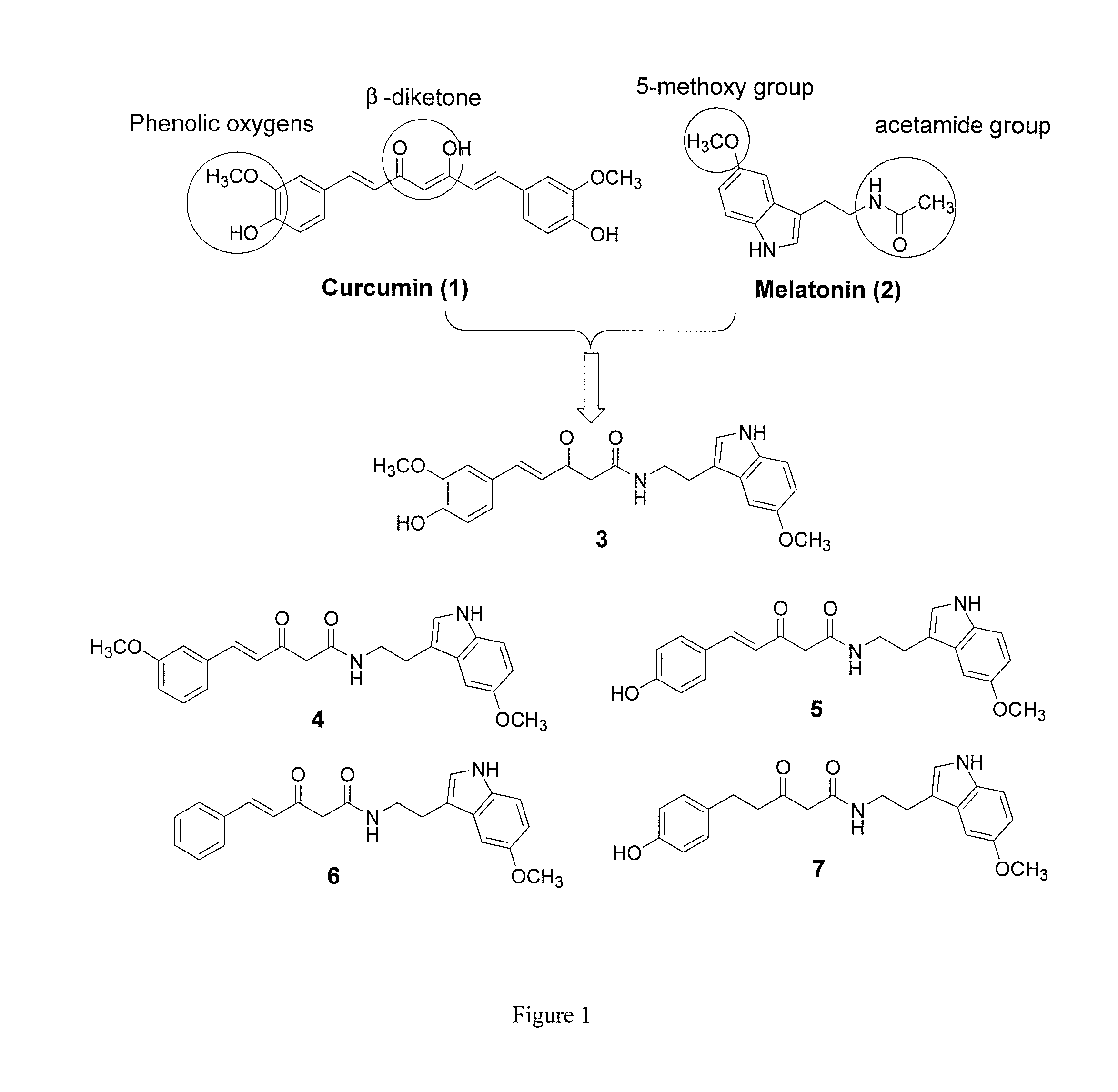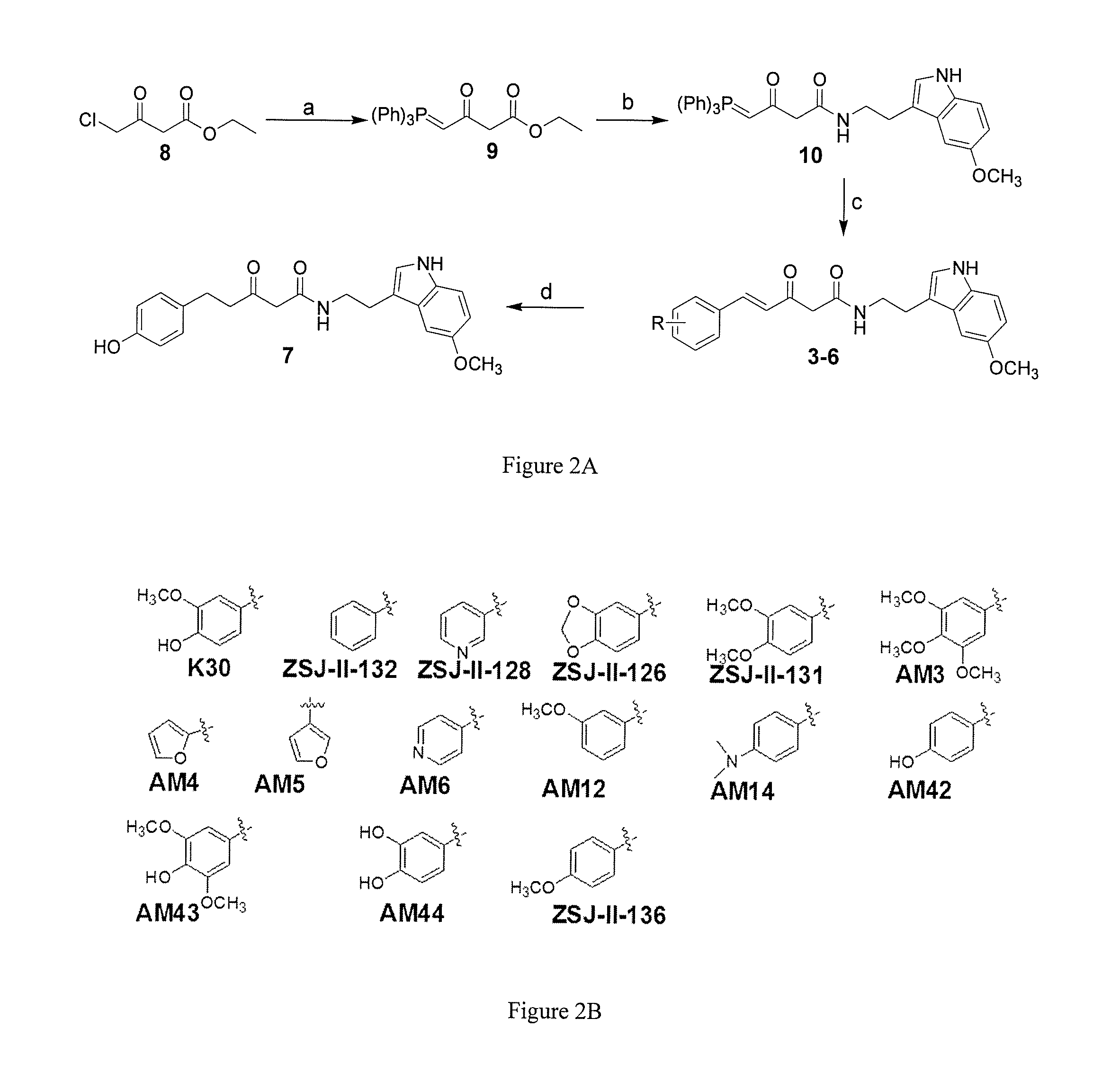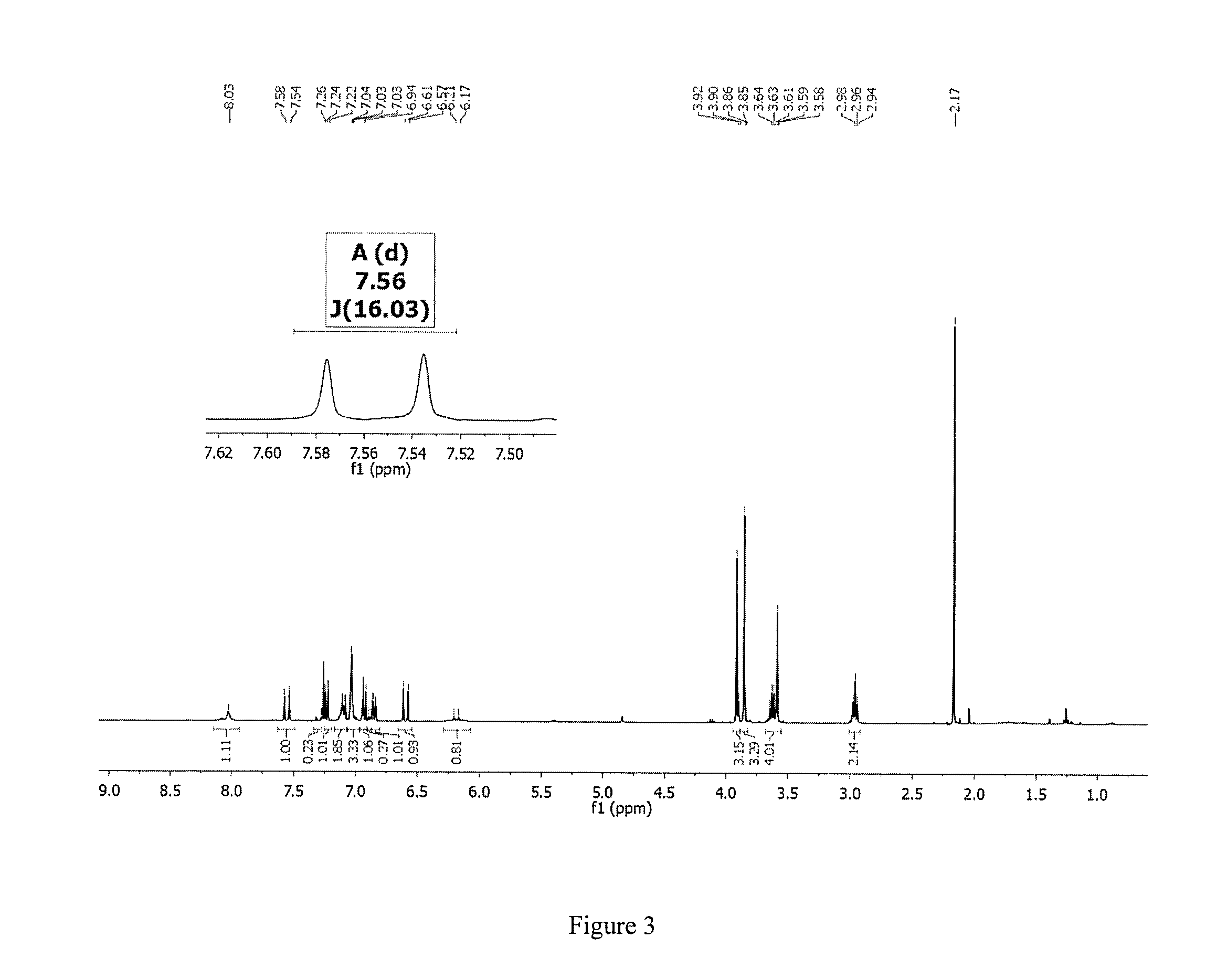Hybrid compounds of curcumin and melatonin as neuroprotectants for neurodegenerative disorders
- Summary
- Abstract
- Description
- Claims
- Application Information
AI Technical Summary
Benefits of technology
Problems solved by technology
Method used
Image
Examples
example 1
5-(4-hydroxy-phenyl)-3-oxo-pentanoic acid [2-(5-methoxy-1H-indol-3-yl)-ethyl]-amide as a neuroprotectant for Alzheimer's disease by hybridization of curcumin and melatonin
Summary
[0091]In an effort to develop effective neuroprotectants as treatments for Alzheimer's disease (AD), hybrid compounds of curcumin and melatonin, two natural products that have been extensively studied in various AD models, were designed, synthesized, and biologically characterized. A lead hybrid compound (7) was discovered to show significant neuroprotection with nM potency (EC50=27.60±9.4 nM) in MC65 cells, a cellular AD model. Multiple in vitro assay results established that 7 exhibited moderate inhibitory effects on the production of amyloid-β oligomers (AβOs) in MC65 cells, but not on the aggregation of Aβ species. It also exhibited significant antioxidative properties. Further mechanistic studies demonstrated that 7's antioxidant effects correlate well with its neuroprotective potency for MC65 cells, an...
example 2
Effect of 5-(4-hydroxy-phenyl)-3-oxo-pentanoic acid [2-(5-methoxy-1H-indol-3-yl)-ethyl]-amide (AM24; compound 7) treatment in an AD mouse model
[0140]APP / PS1 (amyloid precursor protein / presenilin-1) transgenic mice are a well known model for Alzheimer's disease. In this study, APP / PS1 mice were treated with 50 mg / kg of AM24 (compound 7) and the effects on cell type / morphology and the levels of several neuroinflammatory and stress markers was observed. After oral AM24 treatment over 12 weeks, there was a significant decrease in cortical and cortex / hippocampal amyloid plaques (FIG. 8A-D). However, there was no decrease in hippocampal plaques (FIG. 9A-C). Additionally, there was no change in the expression of glial fibrillary acid protein (GFAP), a neuroinflammation marker, in the hippocampus of AM24 treated animals (FIG. 10A-E). The total number (FIG. 11A-C) and type (FIG. 12A-C) of glial cells remained constant between the control and AM24 treated animals.
[0141]AM24 treatment promoted...
example 3
Synthesis of a Series of Analogs of Compound 3 and Evaluation of Neuroprotective Properties
Materials and Methods
[0142]Chemistry.
[0143]Reagents and solvents were obtained from commercial suppliers and used as received unless otherwise indicated. Reactions were monitored by thin-layer chromatography (TLC) (precoated silica gel 60F254 plates, EMD Chemicals) and visualized with UV light or by treatment with phosphomolybdic acid (PMA) or ninhydrin. Flash chromatography was performed on silica gel (200-300 mesh, Fisher Scientific) using solvents as indicated. 1HNMR and 13CNMR spectra were routinely recorded on a Bruker ARX 400 spectrometer. The NMR solvent used was CDCl3 or CD3OD as indicated. Tetramethylsilane (TMS) was used as the internal standard. The purity of target compounds was determined by HPLC using a Varian® 100-5 C18 250×4.6 mm column with UV detection (280 nm and 360 nm) (50% H2O in acetonitrile and 0.1% TFA, and 30-50% H2O in methanol and 0.1% TFA, two solvent systems) to b...
PUM
 Login to View More
Login to View More Abstract
Description
Claims
Application Information
 Login to View More
Login to View More - R&D
- Intellectual Property
- Life Sciences
- Materials
- Tech Scout
- Unparalleled Data Quality
- Higher Quality Content
- 60% Fewer Hallucinations
Browse by: Latest US Patents, China's latest patents, Technical Efficacy Thesaurus, Application Domain, Technology Topic, Popular Technical Reports.
© 2025 PatSnap. All rights reserved.Legal|Privacy policy|Modern Slavery Act Transparency Statement|Sitemap|About US| Contact US: help@patsnap.com



